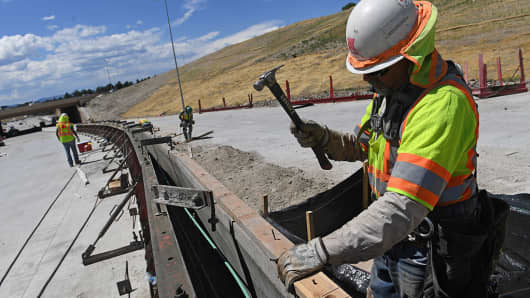America's infrastructure has suffered from sustained, chronic underinvestment for more than 30 years. We are only now beginning to realize how much this has cost the economy, particularly in jobs.
Analysts estimate that modernizing, repairing and expanding our airports, bridges, electric grid, highways, mass transit, ports, and water and sewer systems to meet current and future needs will require an additional $1.5 trillion to $5 trillion in spending over the next 10 to 20 years.
This is on top of roughly $700 billion a year currently being invested at the federal, state and local level, according to our best estimate using data from multiple sources, including both private and public monies.
The administration has proposed an increase of $1 trillion in infrastructure spending over the next five years—about $200 billion a year. Some are leery, but they needn't be.
The additional spending is necessary. And, based on our analysis, if planned and managed properly, a robust infrastructure program would create millions of new jobs—many of them permanent jobs.
We can't afford to wait.
Despite the obvious need to ramp up infrastructure spending—driven home by occasional headline-making bridge collapses, subway line closures and other such occurrences—the public seems strangely unconcerned, with just 7 percent rating it as "one of the main problems facing America today" in an October 2016 Ipsos poll.


